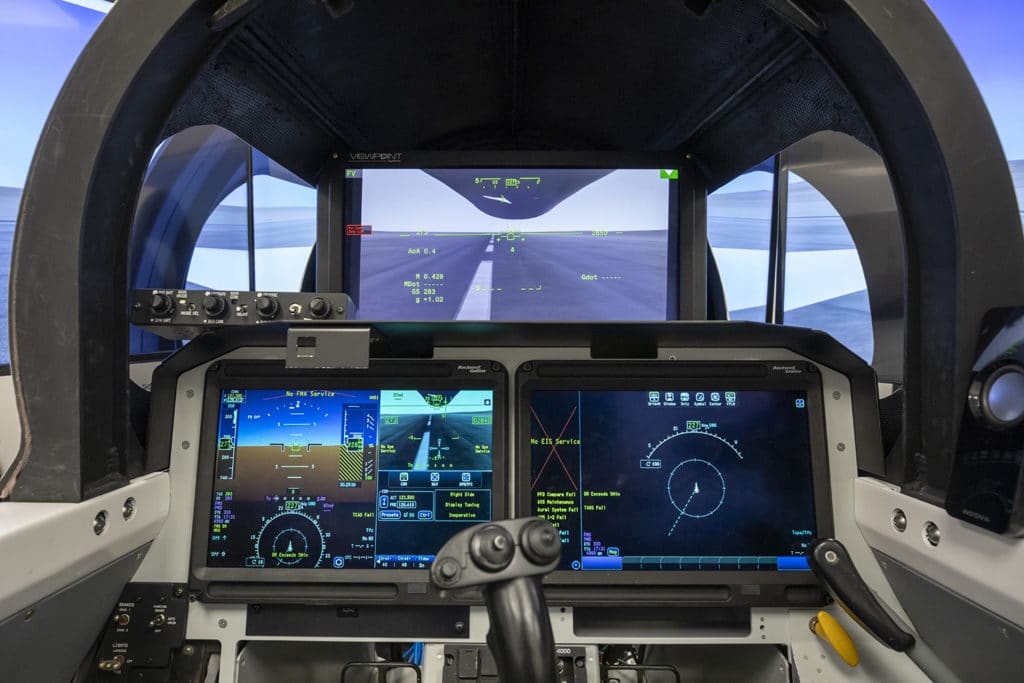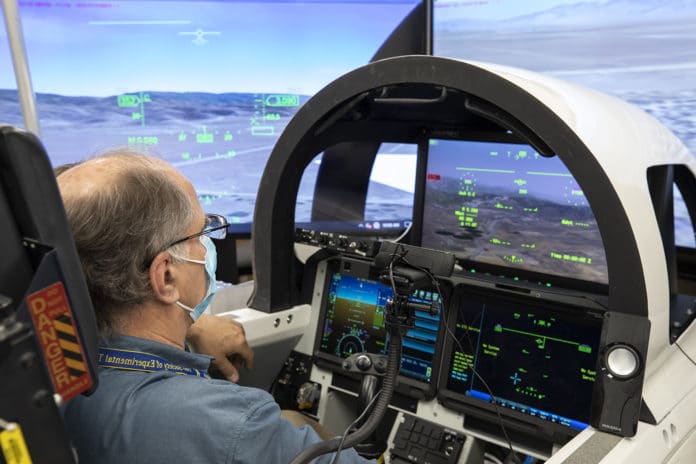At the Langley Research Center in Hampton, Virginia, Nasa researchers have successfully completed a variety of testing for NASA’s X-59 Quiet SuperSonic Technology (QueSST) aircraft‘s eXternal Vision System (XVS), including in-flight tests and structural stability tests.
The X-59 is designed to fly over land at supersonic speeds that create no more than a sonic “thump” to those below. To make this possible, NASA engineers have designed a uniquely shaped aircraft with an elongated nose that requires the cockpit to sit low in the main body of the aircraft, leaving no place for a forward-facing window. This creates a visual blockage for the pilot and a need for further ingenuity.
The XVS is a forward-facing multi-camera and display system that shows the airspace in front of the X-59 QueSST. A 4K-monitor serves as the central “window,” allowing the pilot to safely see traffic in their flight path while also providing graphical flight data in augmented reality for approaches, landings, and takeoffs.

NASA installed the XVS technology in a twin-engine Beechcraft King Air UC-12B turboprop aircraft for flight testing. The hardware was installed into the cabin of the King Air and wired to an exterior camera on the nose. The King Air then went through a series of flight scenarios to collect data on the pilot’s ability to see and maneuver around another aircraft in the airspace. This allowed the researchers to perform a side-by-side comparative evaluation by measuring the pilot’s ability to detect the additional NASA aircraft flying nearby.
During the tests, one pilot was seated in the cockpit of the King Air and could see through the forward windows, while the other pilot was seated in the King Air’s cabin using only the XVS for external awareness. The tests included multiple scenarios, such as an offset nose-to-nose trajectory, which is like having a car in your blind spot while driving. Other scenarios tested traffic crossing at the same altitude, like a dangerous city intersection and aircraft approaching from below.
After the successful in-flight tests of the XVS, researchers then tested the structural integrity of the system through a series of vibration tests. Researchers carefully tested the pallet at vibration levels expected in the flight environment to ensure the equipment would function nominally when installed on the X-59 aircraft.
These tests help researchers to identify and correct any design or workmanship issues before the equipment is installed on the aircraft, preventing a scenario where a component could fail in such a way that causes damage to the aircraft or injures the flight crew.
After successfully passing the tests, the XVS was delivered to Lockheed Martin‘s Skunk Works facility in Palmdale, where it will be installed in the X-59.
